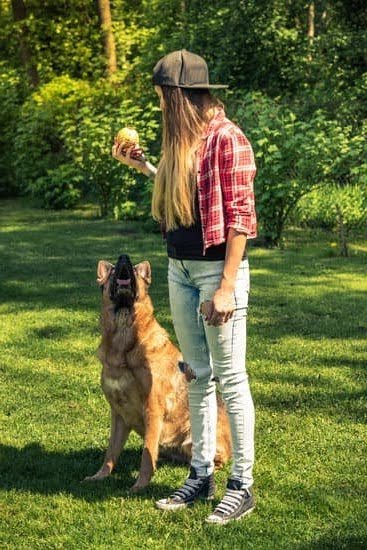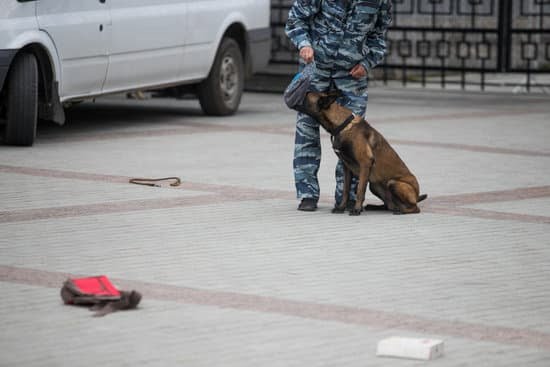Are you wondering how to toilet train a dog in a crate? Crate training is an essential aspect of toilet training for dogs, providing them with a safe and comfortable space while also helping to establish a routine. In this article, we will explore the key steps and strategies for successful crate training and toilet training for your dog.
Crate training plays a vital role in toilet training by providing your dog with a designated space for sleeping, resting, and staying when you are not able to supervise them. The crate helps to limit their access to the rest of the house, which can be particularly useful during the toilet training process.
Choosing the right crate for your dog is crucial in ensuring their comfort and safety. We will discuss how to select the appropriate size, material, and features that will make the crate a positive environment for your furry friend. Additionally, we will explore how to introduce the crate to your dog in a way that creates positive associations and makes it an inviting space for them.
Choosing the Right Crate for Your Dog
When it comes to toilet training a dog in a crate, choosing the right crate is essential for the success of this process. The crate will serve as a safe and comfortable space for your dog while also helping with potty training. Here are some important considerations when selecting the right crate for your dog:
- Size: It’s crucial to choose a crate that is appropriate for your dog’s size. The crate should be large enough for your dog to stand up, turn around, and lie down comfortably, but not too large that it allows for a designated bathroom area. A good rule of thumb is to choose a crate that is only big enough for your dog to have these movements.
- Material: Crates come in various materials such as wire, plastic, or fabric. Each material has its benefits and drawbacks. Wire crates are sturdy and allow for good air circulation, while plastic crates provide more privacy and security. Fabric crates are lightweight and portable but may not be suitable for dogs who chew or scratch.
- Features: Consider if you need any specific features in the crate such as a removable tray for easy cleaning, double door access for convenience, or collapsible design for portability. These features can make the experience more comfortable for both you and your pet.
By carefully considering the size, material, and features of the crate, you can ensure that you create a positive and effective environment for toilet training your dog in a crate. Introducing the right type of crate will set the stage for successful toilet training while providing your pet with a safe and comfortable space.
Introducing the Crate to Your Dog
Choosing the Right Location
When introducing the crate to your dog, it’s important to choose the right location for it. The crate should be placed in a quiet, low-traffic area of your home where your dog can feel safe and secure. Avoid placing the crate near drafty areas or direct sunlight, as this can make the space uncomfortable for your dog.
Creating a Cozy Environment
To make the crate a positive and comfortable space for your dog, consider adding soft bedding or blankets inside. This will create a cozy environment that will help your dog feel at ease while inside the crate. Additionally, consider placing some of your dog’s favorite toys or treats inside the crate to encourage them to explore and view it as a positive space.
Positive Association With the Crate
It’s important to create a positive association with the crate from the beginning. Encourage your dog to enter and exit the crate voluntarily by using treats and praise. You can also feed your dog their meals near or inside the crate to further associate it with positive experiences. Avoid forcing your dog into the crate, as this can create negative associations and resistance towards using it.
By following these steps, you can effectively introduce the crate to your dog in a way that makes it a positive and comfortable space. This is crucial for successful toilet training and will help set the foundation for using the crate as an effective tool in house training.
Establishing a Routine for Crate Usage
Gradual Introduction
When establishing a routine for crate usage, it’s important to start with short periods of time in the crate and gradually increase the duration. This can help your dog get used to being confined without feeling anxious or stressed. Begin by placing your dog in the crate for short intervals while you are at home, gradually increasing the time as they become more comfortable.
Scheduled Play and Exercise
In addition to time spent in the crate, it’s important to schedule regular play and exercise sessions outside of the crate. This allows your dog to release energy and prevents them from feeling too confined. Engaging in physical activity can also help regulate their bathroom habits, making it easier for them to stick to a potty schedule.
Consistency Is Key
Maintaining a consistent routine for crate usage is crucial for successful toilet training. This includes feeding, playtime, potty breaks, and time spent in the crate. Consistency helps your dog understand what is expected of them and creates a sense of predictability, which can reduce anxiety and make training more effective. By sticking to a regular schedule, you can establish good habits and set your dog up for success as they progress towards full house training.
By establishing a routine that balances confinement and playtime, you can create an environment where your dog feels secure, learns bladder control, and makes significant progress in toilet training. With patience, consistency, and positive reinforcement, you’ll be well on your way to successfully toilet training your dog in a crate.
Using Positive Reinforcement for Toilet Training
Toilet training a dog in a crate requires the use of positive reinforcement to effectively teach your dog where to relieve themselves. By using treats, praise, and consistency, you can encourage good bathroom habits and speed up the toilet training process. Here are some key points to keep in mind when using positive reinforcement for toilet training:
- Use high-value treats: When your dog successfully uses the bathroom outside or in their designated area inside the crate, reward them with a small, tasty treat. High-value treats can be especially motivating for your dog and reinforce the desired behavior.
- Offer verbal praise: In addition to treats, make sure to offer plenty of verbal praise when your dog successfully goes potty in the right place. Use an enthusiastic tone of voice and shower them with affection to make them feel proud of their accomplishment.
- Be consistent with rewards: Consistency is key when it comes to positive reinforcement. Make sure to reward your dog each time they go potty in the right place, as this will help them understand what behavior is expected of them.
By using positive reinforcement techniques such as treats, praise, and consistency, you can effectively communicate to your dog where they should go potty and encourage them to repeat this desired behavior.
Remember that patience is crucial during this process, as toilet training takes time and effort. With consistent use of positive reinforcement, your dog will gradually learn where they should go potty and develop good bathroom habits.
Taking Your Dog Outside at the Right Times
Setting a schedule for potty breaks is crucial to successfully toilet training your dog in a crate. By establishing consistent times for outdoor bathroom breaks, you can help your dog understand when and where they should relieve themselves.
Typically, dogs need to go out first thing in the morning, after eating or drinking, after napping, and before bedtime. Pay attention to your dog’s behavior as well – if they start sniffing around or circling in the crate, it may be a sign that they need to go outside.
It’s important to take your dog to the same spot each time they need to go potty. This will help them associate that area with bathroom business, and it can also make it easier for you to clean up after them. When you take your dog outside for a potty break, allow them ample time to do their business. Patience is key during this process – some dogs may need more time than others to feel comfortable going.
Additionally, be sure to praise and reward your dog when they do their business outside. Positive reinforcement can go a long way in reinforcing good behavior. By associating going potty outside with positive experiences such as treats and praise, your dog will be more motivated to follow the established schedule for potty breaks.
| Aspect | Highlights |
|---|---|
| Potty Break Timing | Morning, after eating or drinking, after napping, before bedtime |
| Designated Potty Area | Helps dogs associate the area with bathroom use |
| Positive Reinforcement | Praise and rewards help reinforce desired behavior |
Dealing With Accidents
Accidents are a common part of the toilet training process, and it’s important for dog owners to know how to handle them effectively. When accidents occur, it’s crucial to clean up any messes promptly and thoroughly.
This not only helps to maintain a clean living environment but also prevents your dog from returning to the same spot to eliminate again. Use an enzymatic cleaner specifically designed for pet messes, as this will effectively break down any lingering odors that could attract your dog back to that spot.
In addition to cleaning up accidents, monitoring your dog closely during the toilet training process is essential. Keeping a close eye on your dog allows you to recognize their specific signs of needing to go potty, such as circling, sniffing the ground, or suddenly wandering off. By being attentive, you can intervene before accidents happen and instead take your dog outside where they can eliminate in the appropriate area.
Finally, staying patient throughout the toilet training process is crucial for success. Accidents are bound to happen despite your best efforts, so it’s important not to get frustrated with your dog. Reacting negatively can create anxiety or fear around potty training, making the process more challenging for both you and your pet.
Instead, remain calm and consistent in your approach, offering positive reinforcement when your dog does eliminate in the correct place and gently redirecting them when accidents occur indoors. Remember that toilet training takes time and persistence but with patience and consistency, your pup will eventually learn.
Gradually Increasing Crate Freedom
As your dog becomes more accustomed to spending time in their crate, it is important to gradually increase their freedom within the house. This step-by-step process can help them transition from using the crate for toilet training to being fully house trained.
Start by leaving the crate door open while you are at home, allowing your dog to come and go as they please. This will give them a sense of independence while still having the security of their crate as a safe space.
You can also begin allowing your dog supervised access to other areas of the house, gradually expanding the space they have available to them. Keep a close eye on them during this time to ensure they do not have any accidents or engage in undesirable behavior. If accidents do occur, it may be necessary to temporarily revert back to increased crate confinement and then slowly resume increasing their freedom.
It’s important to remember that every dog will progress at their own pace, so patience is key during this process. Positive reinforcement and consistent training are crucial in helping your dog understand what is expected of them as they gain more freedom in the house.
| Training Day | Activities |
|---|---|
| Day 1-3 | Leave crate door open while at home |
| Day 4-7 | Supervised access to other areas of the house |
Troubleshooting Common Crate Training Challenges
It’s not uncommon for pet owners to encounter challenges when crate training their dogs. Some of the most common issues include whining, separation anxiety, and regression. Understanding how to address these challenges can help make the crate training process smoother and more successful.
Whining is a common behavior that many dogs display when they are first introduced to crate training. It’s important for pet owners to recognize that this behavior is normal and may take some time to resolve. One way to address whining is to avoid giving in to the dog’s demands when they whine. By not rewarding the behavior with attention or treats, the dog will eventually learn that whining does not result in getting what they want.
Separation anxiety can also be a challenge during crate training, especially for dogs who are particularly attached to their owners. To help ease separation anxiety, it’s important to create positive associations with the crate through rewards and praise. Additionally, gradually increasing the amount of time that the dog spends in the crate while their owner is away can also help them become more comfortable with being alone.
Regression in crate training is another common challenge that pet owners may encounter. This can happen when a dog who has been successfully crate trained begins exhibiting behaviors such as soiling their crate or whining excessively. It’s important for pet owners to remain patient and consistent during this time, as regression can be temporary. Addressing any underlying issues, such as changes in routine or environment, can also help resolve regression in crate training.
By understanding how to troubleshoot common crate training challenges such as whining, separation anxiety, and regression, pet owners can help their dogs successfully adjust to crate training while minimizing stress and discomfort for both themselves and their pets.
Conclusion
In conclusion, toilet training a dog in a crate requires patience, consistency, and positive reinforcement. By choosing the right crate, introducing it properly to your dog, establishing a routine for crate usage, and using positive reinforcement for toilet training, you can set your furry friend up for success. It’s important to also take your dog outside at the right times and deal with accidents with patience and understanding.
As you celebrate the success of toilet training your dog in a crate, it’s crucial to commit to ongoing training and care. Gradually increasing crate freedom and moving towards full house training will require continued effort and consistency. Additionally, troubleshooting common crate training challenges such as whining, separation anxiety, and regression may arise, but with dedication and the right approach, these challenges can be overcome.
Remember that every dog is unique and may progress at different rates. Stay patient with your dog through this process as they learn to understand their new routine. With dedication to ongoing training and care, you can achieve successful toilet training for your dog while also strengthening the bond between you both.
Frequently Asked Questions
Should You Put a Pee Pad in a Crate?
Putting a pee pad in a crate can be a helpful tool for house training a puppy or dealing with an older dog’s incontinence issues. It provides a designated spot for them to relieve themselves when they cannot go outside.
However, it’s important to gradually transition the dog away from relying on the pee pad and towards going outside for bathroom breaks.
How Do You Stop a Dog From Peeing and Pooping in the House?
To stop a dog from peeing and pooping in the house, it’s crucial to establish a consistent routine for potty breaks and provide positive reinforcement when they go outside. Supervision is also key – keeping an eye on the dog and interrupting any accidents inside can help them understand where they should be doing their business.
Cleaning up accidents with an enzymatic cleaner is important to remove any lingering scent that may encourage repeat offenses.
What Size Crate for Potty Training?
When choosing a crate size for potty training, it’s best to select one that allows the dog enough space to stand up, turn around, and lie down comfortably. A crate that is too large may give the dog room to have an accident without feeling like they have soiled their living space, while a crate that is too small can be uncomfortable and inhibit proper rest.
Choosing the right size crate can contribute to the success of potty training efforts.

Welcome to the blog! I am a professional dog trainer and have been working with dogs for many years. In this blog, I will be discussing various topics related to dog training, including tips, tricks, and advice. I hope you find this information helpful and informative. Thanks for reading!





